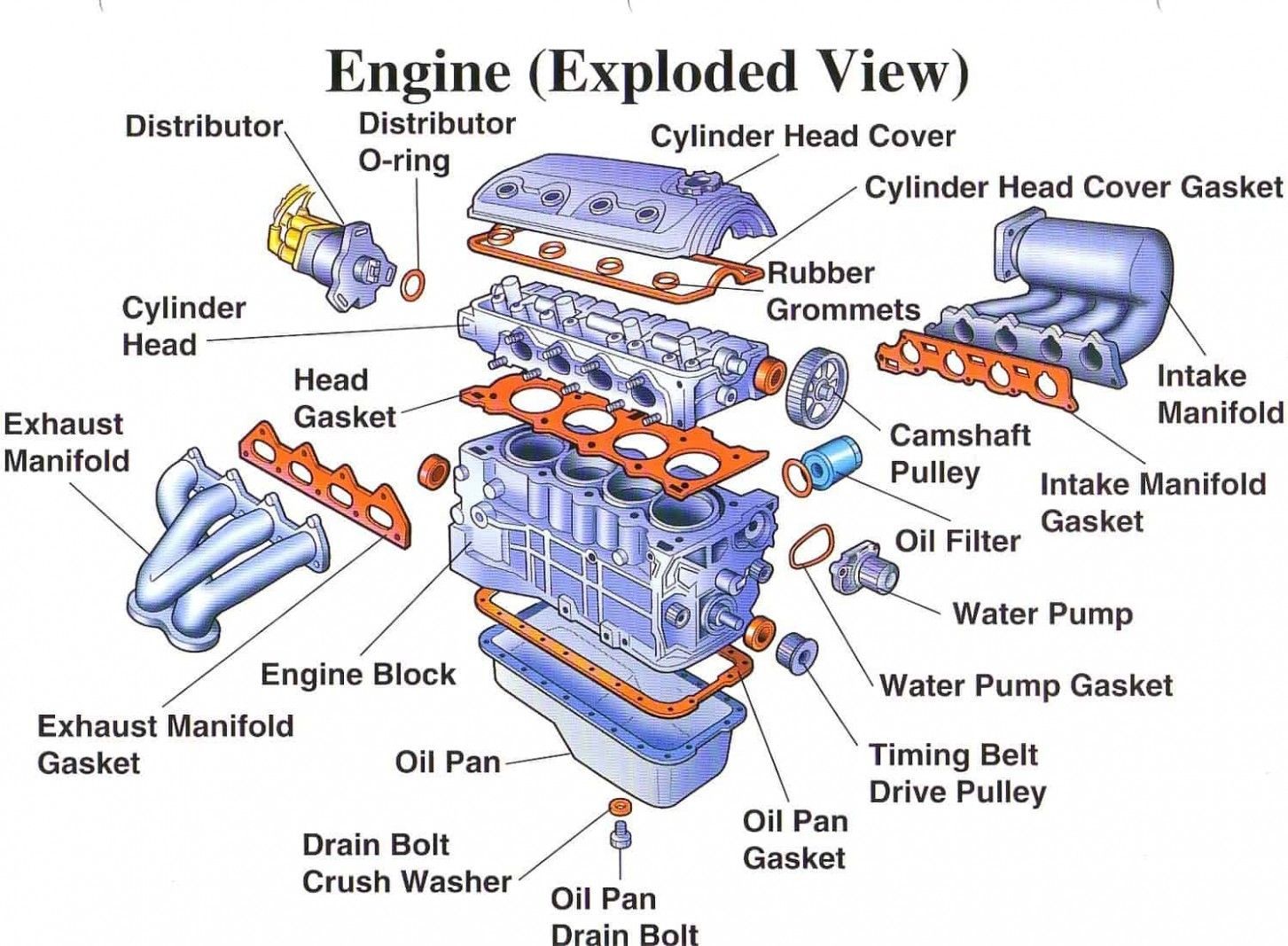The Engine In Your Car Is Sometimes Called

So, you've probably heard the engine in your car referred to by a few different names. Sometimes it's simply "the engine," but other times you'll hear terms like "powerplant" or "motor." While seemingly interchangeable, there's a subtle historical and technical nuance behind why these terms are used, and understanding that nuance can help you grasp how your car's engine works.
The Basics: Engine vs. Motor
Let's tackle the most common point of confusion: the difference between an engine and a motor. Technically speaking, an engine converts thermal energy (usually from burning fuel) into mechanical energy. A motor, on the other hand, typically converts electrical energy into mechanical energy. Think of an electric fan – that's a motor. In a car, the device that cranks your engine when you start it is an electric motor, often called a starter motor.
The internal combustion engine (ICE) in your car uses the principle of burning fuel (gasoline, diesel, etc.) inside cylinders. This combustion creates high-pressure gas which pushes pistons. The reciprocating (up and down) motion of these pistons is then converted into rotary motion by the crankshaft. That rotary motion is what ultimately drives your wheels. Because it's converting thermal energy (from combustion) into mechanical energy, it's technically an engine.
While some purists insist on only using "engine" for ICE vehicles, the term "motor" has become deeply ingrained in automotive vernacular, especially in the US. This is partially due to historical usage and the perceived simplicity of the term.
The adoption of the term "motor" may also be linked to the early days of automobiles. Many early car manufacturers used electric starters instead of hand cranks. Therefore, the electric starting motor became a key component in an automobile. This may have led to the widespread, albeit technically incorrect, use of the word "motor" to describe the entire engine.
Powerplant: A More Comprehensive Term
The term "powerplant" is a broader, more inclusive term. It encompasses the entire system responsible for generating power. In the context of a car, the powerplant doesn't just refer to the ICE itself; it also includes all the supporting systems required for it to function. This means things like:
- Fuel System: Fuel tank, fuel pump, fuel injectors or carburetor, fuel lines, fuel filter.
- Ignition System: Spark plugs, ignition coil, distributor (in older cars), electronic ignition module (ECU).
- Cooling System: Radiator, water pump, thermostat, coolant hoses.
- Lubrication System: Oil pump, oil filter, oil pan, oil passages.
- Intake System: Air filter, intake manifold, throttle body.
- Exhaust System: Exhaust manifold, catalytic converter, muffler, tailpipe.
So, when someone refers to the "powerplant" of a vehicle, they're often talking about the entire system, not just the bare engine block. It's a more holistic view.
Engine Configurations and Terminology
The term you use might also depend on the specific type of engine you're discussing. Here are a few common engine configurations and associated terms:
- Inline Engine: Cylinders arranged in a single row. Often referred to as an "inline-four" (I4) or "inline-six" (I6).
- V-Engine: Cylinders arranged in two banks, forming a "V" shape. Commonly known as a "V6" or "V8".
- Flat Engine (Boxer Engine): Cylinders arranged horizontally on opposite sides of the crankshaft. Typically referred to as a "flat-four" or "flat-six." Subaru and Porsche are well known for using flat engines.
- Rotary Engine (Wankel Engine): Uses a triangular rotor instead of pistons. Mazda is famous for its rotary engines.
Each of these configurations has its own unique characteristics and terminology. For example, you might talk about the "firing order" of a V8 engine or the "apex seals" in a rotary engine.
Engine Displacement and Power
Another key term is engine displacement. This refers to the total volume swept by all the pistons inside the cylinders during one complete stroke. It's usually measured in cubic centimeters (cc) or liters (L). A 2.0L engine, for example, has a total swept volume of 2.0 liters. Generally, a larger displacement engine *can* produce more power, but that's not the whole story. Other factors, like engine design, forced induction (turbocharging or supercharging), and fuel injection, also play a significant role.
Engine power is typically measured in horsepower (hp) or kilowatts (kW). Horsepower is a unit of power, specifically the rate at which work is done. Torque, on the other hand, is a measure of rotational force. Think of torque as the twisting force that turns the crankshaft. A high-torque engine will typically feel more responsive at lower engine speeds.
Modern Engine Technologies and Terminology
Modern engines incorporate a wide range of technologies to improve efficiency and performance. Some key terms you might encounter include:
- Variable Valve Timing (VVT): Allows the engine to adjust the timing of the intake and exhaust valves, optimizing performance at different engine speeds.
- Direct Injection (DI): Fuel is injected directly into the combustion chamber, improving fuel efficiency and power.
- Turbocharging/Supercharging: Forces more air into the engine, increasing power output.
- Engine Control Unit (ECU): The "brain" of the engine, controlling various parameters such as fuel injection, ignition timing, and idle speed. Also called an ECM, or engine control module.
Understanding these technologies and the associated terminology is essential for anyone working on modern engines.
Conclusion: Context Matters
Ultimately, whether you call it an engine, a motor, or a powerplant, the most important thing is clear communication. While "engine" is the most technically accurate term for an ICE, "motor" is widely accepted and understood. "Powerplant" offers a more comprehensive view of the entire system. The best term to use depends on the context and your audience. As long as you understand the underlying principles and the terminology involved, you'll be well-equipped to discuss and work on your car's engine with confidence.
